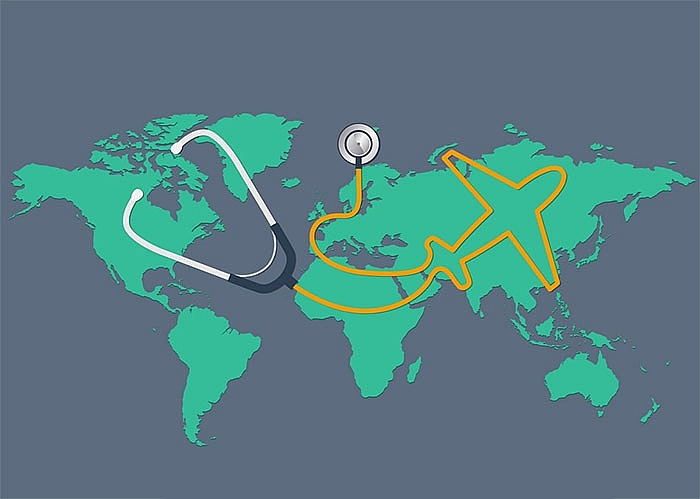Medical tourism model full of potential in Vietnam
 |
| Medical tourism model full of potential in Vietnam, illustration photo source: internet |
According to Frost & Sullivan, a leading global research and consulting firm, the value of the global medical tourism market reached approximately $78.5 billion in 2010. This figure in Southeast Asia was about $4.4 billion in 2012. Despite these promising indicators, Vietnam is still showing little interest in this type of tourism. At a while the Ministry of Health reported that about 40,000 Vietnamese go abroad every year to receive medical treatment, spending a total of $3 billion on average per year.
To catch up with the trend, local investors are looking to build international standard hospitals around popular tourist attractions such as Vingroup with its Vinmec International Hospital in Phu Quoc, Vung Tau, Halong, Nha Trang, Do Son, and Danang along with Hanoi and Ho Chi Minh City. As these medical centres have sprung up, they have welcomed thousands of local and international visitors and patients coming to relax and enjoy treatment. Many tourists wishing to beautify their looks also enjoy reputable beauty salons located in Vietnam due to their cheap price in comparison with their home country.
Records on the world’s medical tourism business show many Asian countries such as India, Thailand, and Singapore enjoy high revenue after growing a successful model. Singapore currently possesses the best medical system globally with a team of excellent experts and doctors, as well as advanced equipment. Whilst Thailand is widely considered a powerhouse thanks to its well known tourism base in addition to a team of skilful well-trained doctors. In recent years, medical tourists in Thailand have only accounted for 9 percent of the total number of visitors to the country yearly, an average of 1.5 million visitors. Malaysia earned $292 million from medical tourism in 2017, up 30 per cent on-year.
In comparison to those countries Vietnam enjoys many strengths, such as in the fields of Oriental herbal medicine, dentistry, and aesthetic treatment. Such treatments come at a reasonable cost, while the nation is able to combine these practices with rich and stunning natural landscapes.
However, Le Duc Khang, lecturer of Philosophy of Traditional Medicine at Vietnam University of Traditional Medicine, told VIR, “Healthcare in Vietnam has been showing great improvements, but we still lag behind. The country needs to do a lot to develop healthcare tours. Firstly, medical standards and service quality must improve nationally. Secondly, doctors must be competent in foreign languages so they are able to clearly communicate with patients. And it is important that the administrative procedures are streamlined, so that it becomes a simpler process for patients.”
Khang also stressed that “Vietnam should call for greater investment from domestic and foreign teams of medical science in hi-tech and high-quality treatment centres. Hopefully, Industry 4.0 will help Vietnam traditional medicine to strengthen its position within the healthcare system.”
Based on experts in the tourism industry, the nation has a number of long-standing traditional medical practices and a huge number of experienced doctors. Among the types of traditional medicine offered, acupuncture is one of the best renowned among visitors.
The country’s skill in acupuncture became known throughout the world via the story of Nguyen Tai Thu, a professor, doctor, and expert in acupuncture treatment. He used to collaborate with Sweden’s NTT Acupuncture Medical Tourism International Group to promote and operate a number of acupuncture tours. The tours saw qigong, a system of co-ordinated body postures and movements, breathing, and meditation used for purposes of health, introduced to international visitors. However, with only a few hundred visitors per year, the revenue from the medical tourism was negligible.
Nguyen Van My, chairman of Lua Viet Tours, stated that traditional medical tour has potential but needs to be diversified. For example, instead of designing a tour taking visitors to sites, having health check-ups, and purchasing medicine on such streets as Luong Nhu Hoc, Trieu Quang Phuc, or Hai Thuong Lan Ong in Ho Chi Minh City’s District 5, leisure and health tourism could be more intertwined. These tours could take place with a private Oriental medicine doctors, or feature a tour where tourists can learn about Vietnamese herbal medicine, how they are planted and processed. “Currently, there are no Southeast Asia countries that have yet to develop Oriental medical tourism products, though this method is receiving more and more attention,” My said.
In order to attract more foreign tourists, medical centres nationwide are in need of modern and professional facilities and equipment, along with teams of well-trained nurses and doctors. Moreover these medical centres and hospitals must also co-operate with travel agencies to create and promote more unique tourism products.
What the stars mean:
★ Poor ★ ★ Promising ★★★ Good ★★★★ Very good ★★★★★ Exceptional
 Tag:
Tag:
Themes: Healthcare
Related Contents
Latest News
More News
- The destinations powering Vietnam’s festive season travel demand (December 04, 2025 | 18:33)
- Vietnam named among the world’s most exciting winter destinations (December 04, 2025 | 15:10)
- Phu Tho emerges as northern Vietnam’s new tourism hub (December 01, 2025 | 17:00)
- Vietjet completes Airbus A320/A321 updates ahead of deadline (December 01, 2025 | 09:49)
- Vietjet resumes Con Dao flights from early December (November 28, 2025 | 15:24)
- Free tickets, Lunar New Year promotions on offer at Vietjet Mega Livestream (November 26, 2025 | 15:32)
- Scandinavian Airlines and Vietnam Airlines broaden agreement with new routes (November 25, 2025 | 17:04)
- Halong Cruise Port welcomes over 3,100 international visitors (November 12, 2025 | 18:06)
- Vietnam.travel climbs to second place in Southeast Asia website rankings (November 12, 2025 | 18:01)
- Cat Ba named among Southeast Asia’s top island adventures (November 11, 2025 | 18:09)






















 Mobile Version
Mobile Version